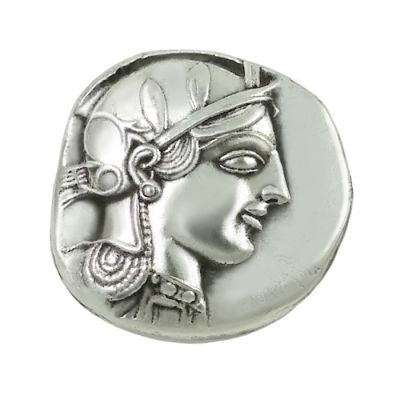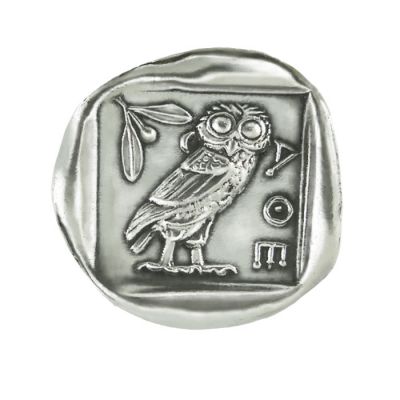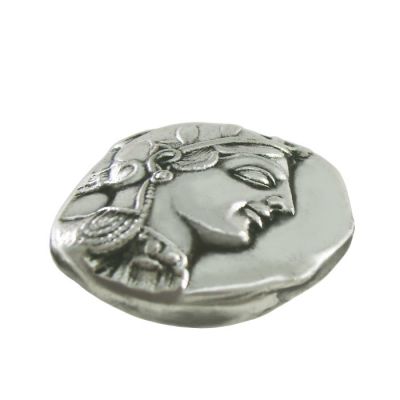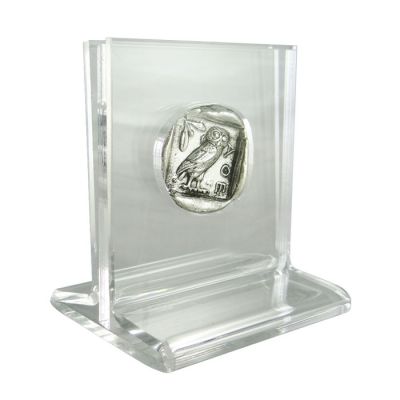Inspired by the ancient Greek civilization, with its rich culture, history and art, we created for you a silver-plated copy of the silver tetradrachm of Athens, with goddess Athena pictured on the obverse and an owl with the inscription ΑΘΕ (athe) and an olive branch, on the reverse. A great collectible for the admirers of the ancient Greek world, but also for coins collectors, this Athenian coin.
Diameter of the coin: 2,5cm
Dimensions of the acrylic case: 5 cm x 6 cm x 5 cm
Every coin is offered in an acrylic case for protection and better presentation and gift packaging.
Take a look at the rest of the coins collection and the set of five silver-plated coins.
All prices include VAT.
The silver tetradrachm of Athens (449-419 BC) (Athenian tetradrachm) was the most widely used coin throughout Greece in the heyday of Athens in the 5th BC century to the time of Alexander the Great, where by then prevailed the Macedonian coins. It was used in trade throughout the Greek world. The ancient Athenians chose on the obverse of the coin to depict goddess Athena, who also gave her name to the city and on the reverse, the symbol of the city of Athens, the owl (glauka) with an olive branch, the sacred plant of Athens and the inscription ΑΘΕ (athe).
This coin was better known simply, as the Athenian owl and is exhibited at the Numismatic Museum in Athens. Many centuries later, the Athenian owl of the tetradrachm is illustrated again on the Greek coin of one euro.
The first coins were made of electrum in Asia Minor, an alloy of gold and silver in the late 7th BC century. In the front side of the coin were shown the respective symbols of the cities, the deities who protected the cities, mythical persons or regional products of the cities, visualizations that made recognizable their origin.
The precious metal, which was mainly silver, set the value of the coin, the small shape made it easy to carry and the symbol of each issuing authority was the guarantee of weight and authenticity. At the end of the 5th century BC, copper coins were produced, in order to be used for the small daily transactions.
No posts found















